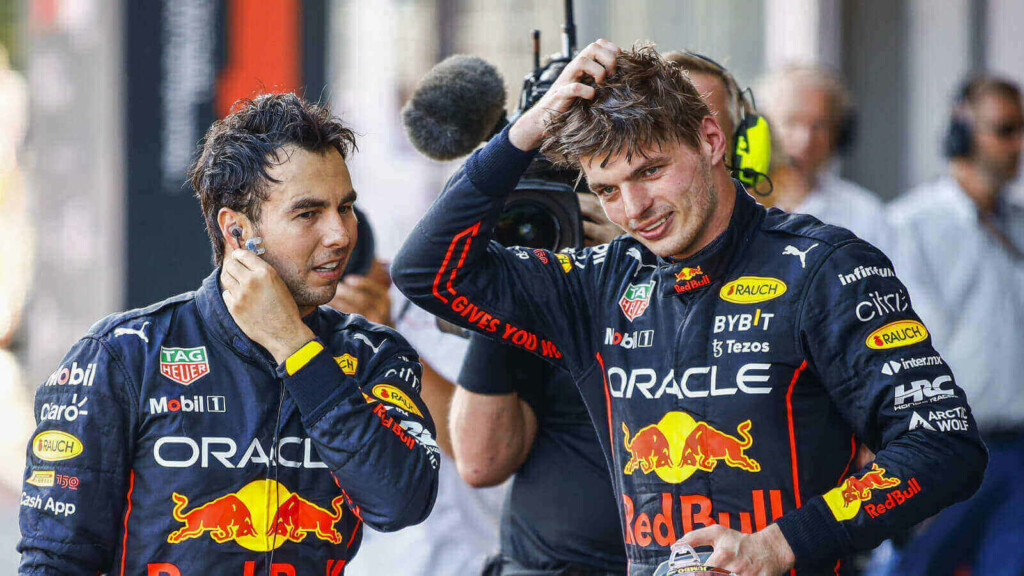Fans of the sport saying they never thought of becoming a Formula 1 driver are lying.
We all wonder how to become an F1 driver sooner or later since the raw exhilaration of driving those speedy beasts is palpable even through our TV screens.
Chasing the fame and fortune of driving in F1 is improbable but not impossible.
Here’s how to go about it!
How to Become an F1 Driver?

Anyone who has pondered how to become a Formula 1 driver has seen the mammoth task they have at hand since it takes everything from talent to money, connections, and effort.
Moreover, unless you have started developing your talent during your childhood in low-tier motorsports, such as karting, driving the 1,000 hp F1 cars becomes a pipe dream.
That said, let’s look at the main prerequisites for success in the cut-throat world of F1.
1. Dedicate Yourself From an Early Age
To ultimately make your way into F1—the pinnacle of all motorsport—you need an iron will and unwavering focus that you should start applying as soon as possible.
For example, the all-time F1 greats Senna and Schumacher started driving cars as early as 7 and 4 years of age, with the latter winning a karting championship at 6!
Ultimately, your dream of joining this sport is not unique, as every half-serious driver strives to get one of F1’s prestigious racing seats and the paychecks that come with it.
To make that dream a reality, you must commit your entire childhood to honing your craft by driving as much as possible in all kinds of circuits and conditions. Yes, your usual way of life and personal relationships will suffer as a result, but greatness requires sacrifice.
2. Master the Fundamentals of Racing
The first and most important step on your journey to becoming a professional driver is developing your racing skills and techniques, especially for single-seater cars.
Karting is the best way to learn these fundamentals and nurture your talent since it allows you to confront the same challenges you would face in bigger and faster cars.
In addition to learning the basics of vehicle handling, go-karts help you discover your own limits, which get pushed every bit forward each time you get behind the wheel.
If you persist in your karting career, you will internalise and fine-tune all essential driving techniques, which will start feeling instinctive and natural henceforth.
Related: 24 Fast Formula 1 Facts and Stats That Will Surprise You
3. Move Onto Bigger Single Seaters

When you master karting, you have to climb the single-seater ladder towards bigger and faster Formula racing (F4, F3, F2, etc.), collectively known as F1’s feeder series.
Making the right steps at this juncture proves crucial for your career, as the many single-seater tournaments you could choose come with different requirements and benefits.
However, regardless of the motorsports series you focus on, you can expect the same fierce competition everywhere, as only the best of the best progress further.
Seasoned professionals also recommend choosing the European circuit as the world’s most reputable and competitive racing region and the one that uncovers your true potential.
There, you can make a name for yourself by racing up to 60 drivers in a single race, which will undoubtedly help you refine your driving chops and get noticed by teams and sponsors.
4. Establish Relationships With Teams and Sponsors
Like any other career, proper networking is needed to succeed in motorsports since no single driver has made it without the backing of a team and sponsors.
Teams provide everything you would need to grow as a budding racer: from financial support to seasoned mentors, training resources, and racing opportunities.
Sponsors are also a vital career pillar since the higher you climb into the world of Formula racing, the more expensive it becomes before becoming profitable.
Naturally, sponsorship opportunities typically go to those outstanding drivers who show promise of making it until the end by racking up success after success.
With all of that out of the way, it’s worth noting that pay drivers (those whose financial backing trumps their talent) have increased in number lately.
Did you know: An F1 car can cost up to £15 million.
5. Train Your Body and Mind
F1 drivers are real athletes in every sense of the world. Enduring the massive g-forces generated by the car takes a significant toll on the driver’s body and mind.
You probably cannot imagine the effort required to make split-second decisions while sweating profusely in a tight cockpit and experiencing forces in the amount of 4 to 6 g.
Therefore, to withstand these extreme conditions during the two-hour-long F1 races, drivers must focus on their physical fitness, especially endurance and neck strength.
However, mental fortitude is equally important since only the most disciplined drivers are not easily frayed after setbacks, of which you will most likely experience many.
Mental training also keeps your brain healthy and agile, which helps you maintain focus and quick reactions at all times—the difference between life and death sometimes.
Furthermore, your off-track downtime should be well-spent by analysing data to see how and where to improve, testing in simulators, and watching race footage.
6. Work Towards Getting an FIA Super License

One of the main requirements for becoming a Formula 1 driver is getting a Super License and accruing 40 points over three seasons in FIA-approved racing competitions.
The rules for obtaining a Super License and racking up points have been tightened in recent years ever since Verstappen made his F1 debut at the very young age of 17.
Now, to get an F1 seat, you must compete in junior series that reward Super License points and complete at least 80% of two single-seater seasons.
The points you get vary depending on the series’ importance. For instance, while winning the World Karting Championship brings you only 3 points, becoming the F2 champ rewards you with 40 points—the total amount you require to qualify for F1 racing.
Pressing the Pedal to the Metal
How to get into F1 racing? Well, the answer can be summed up in two words: time and effort. Ultimately, it all comes down to the nitty-gritty: you need to take all the proper steps at the right time and even plead with the gods above for a sizeable amount of luck (or money!).
If everything else fails, you can always get a gaming wheel and work on becoming an esports F1 legend—no less competitive but without the fame and the smell of burnt rubber. However, now that you know how to become an F1 driver, you should at least give it a try, eh?

